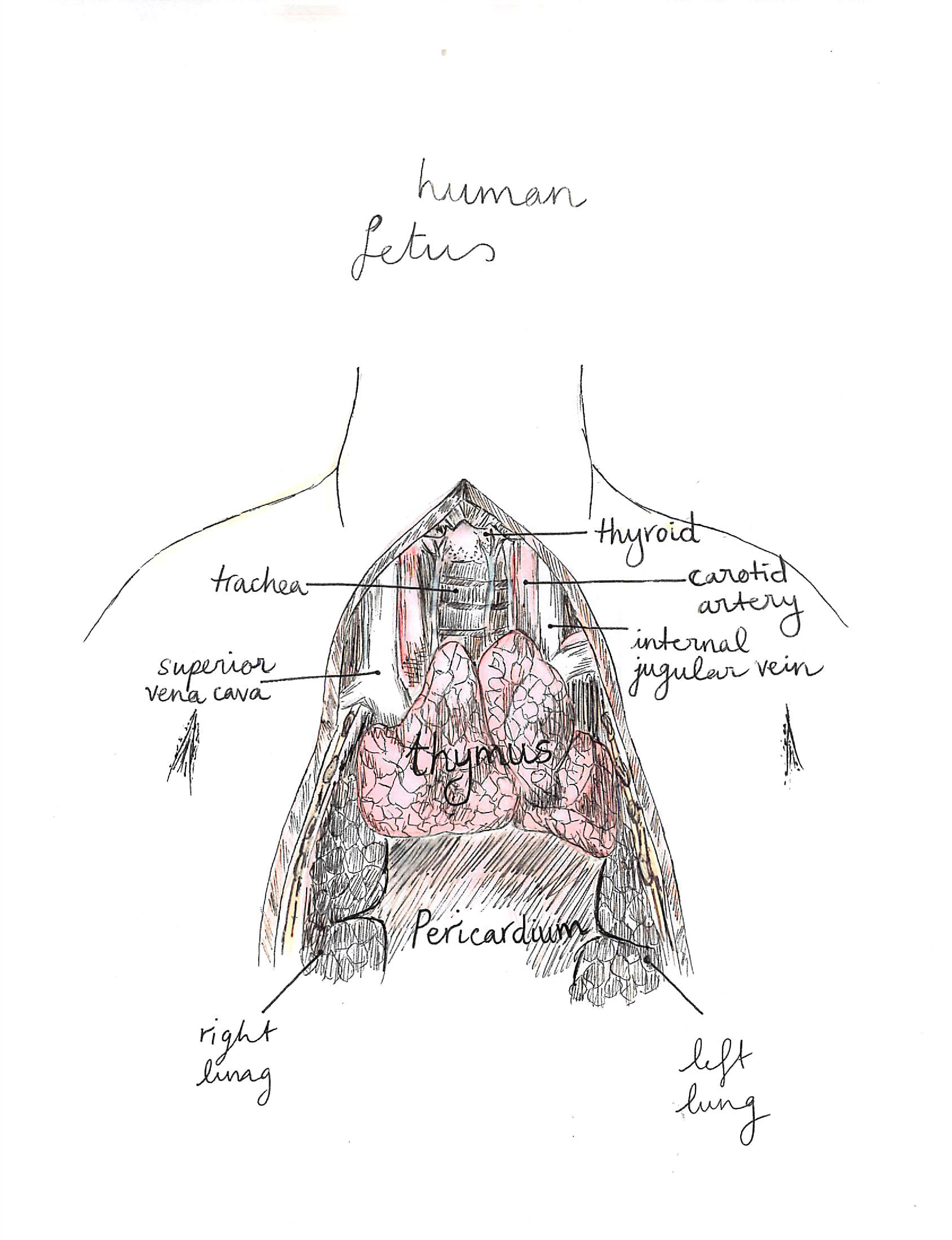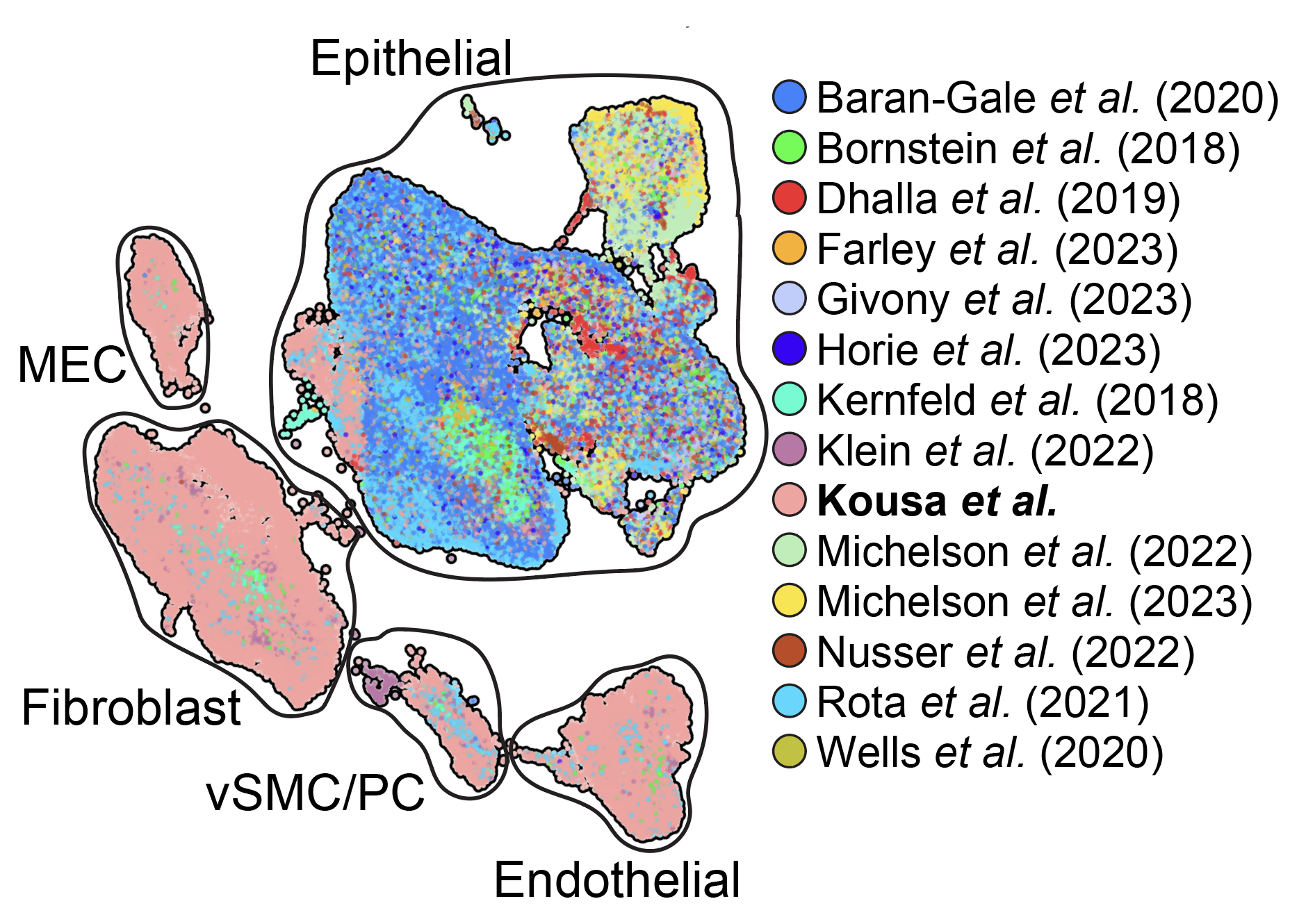Summary
The thymus is essential for establishing adaptive immunity yet undergoes age-related involution that leads to compromised immune responsiveness. The thymus is also extremely sensitive to acute insult and although capable of regeneration, this capacity declines with age for unknown reasons. We applied single-cell and spatial transcriptomics, lineage-tracing and advanced imaging to define age-related changes in non-hematopoietic stromal cells and discovered the emergence of two atypical thymic epithelial cell (TEC) states. These age-associated (aa)TECs formed high-density peri-medullary epithelial clusters that were devoid of thymocytes; an accretion of non-productive thymic tissue that worsened with age, exhibited features of epithelial-to-mesenchymal transition (EMT), and was associated with downregulation of FOXN1. Interaction analysis revealed that the emergence of aaTEC drew tonic signals from other functional TEC populations at baseline acting as a sink for TEC growth factors. Following acute injury, aaTEC expanded substantially, further perturbing trophic regeneration pathways and correlating with defective repair of the involuted thymus. These findings therefore define a unique feature of thymic involution linked to immune aging and could have implications for developing immune boosting therapies in older individuals.


Single cell sequencing dataset collection of the mouse and human thymus
ThymoSight all mouse

ThymoSight all human

For a detailed description of the publicly available single cell sequencing datasets included in ThymoSight go to www.thymosight.github.com. For the data preprocessing steps and integration analyis see the Jupyter notebook here.